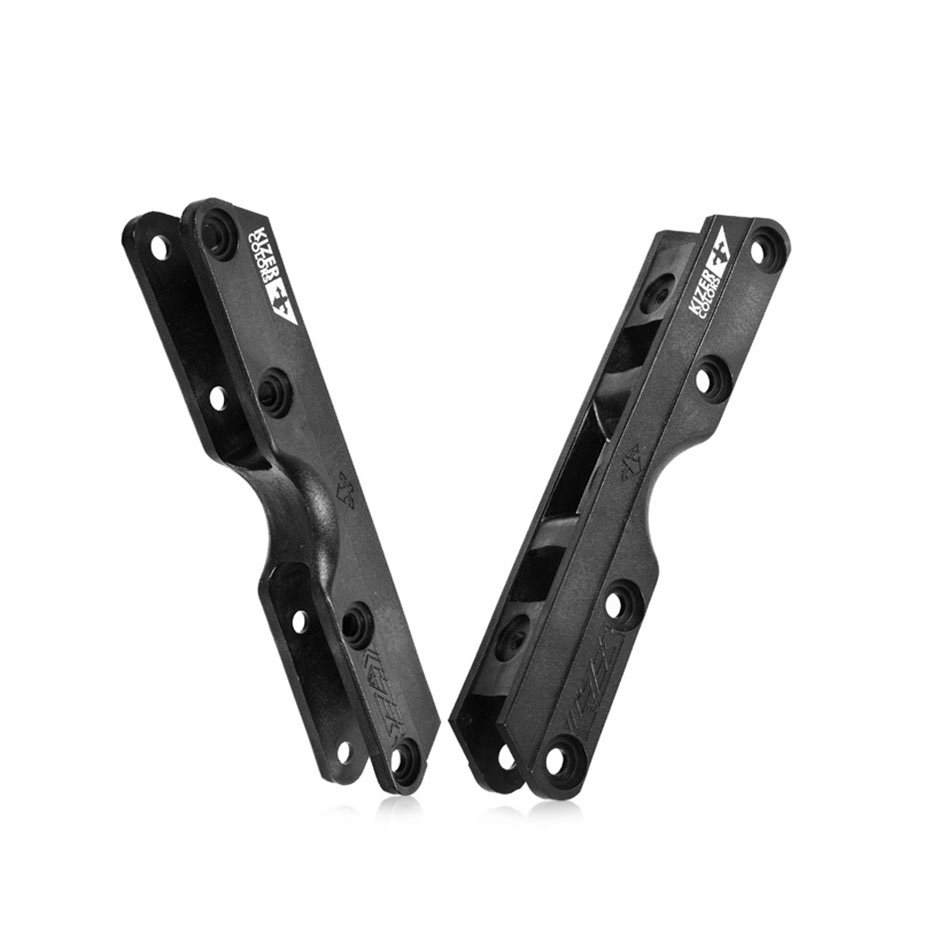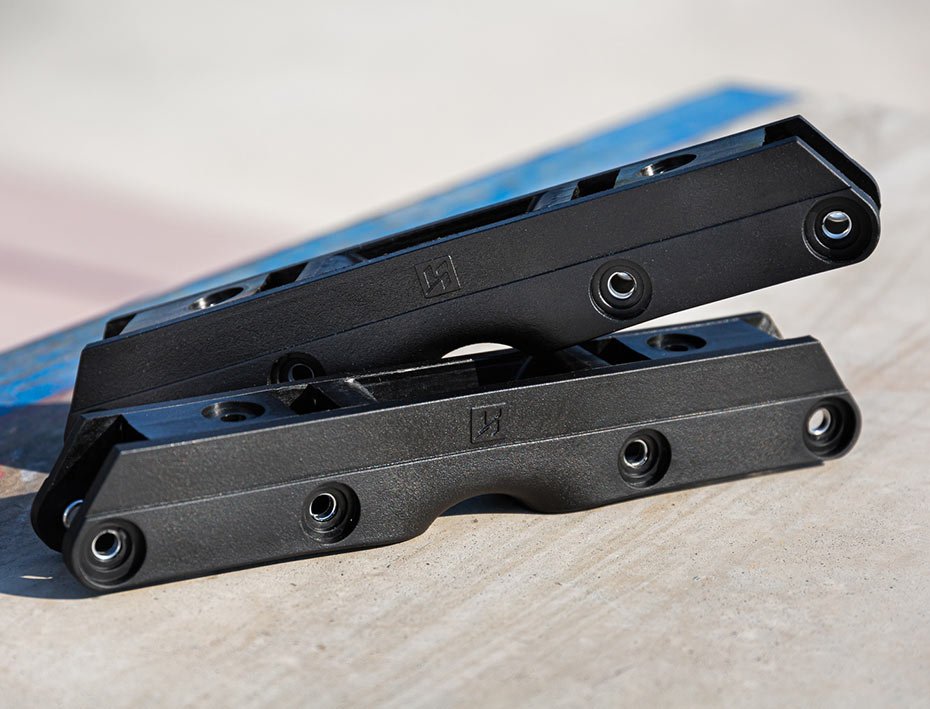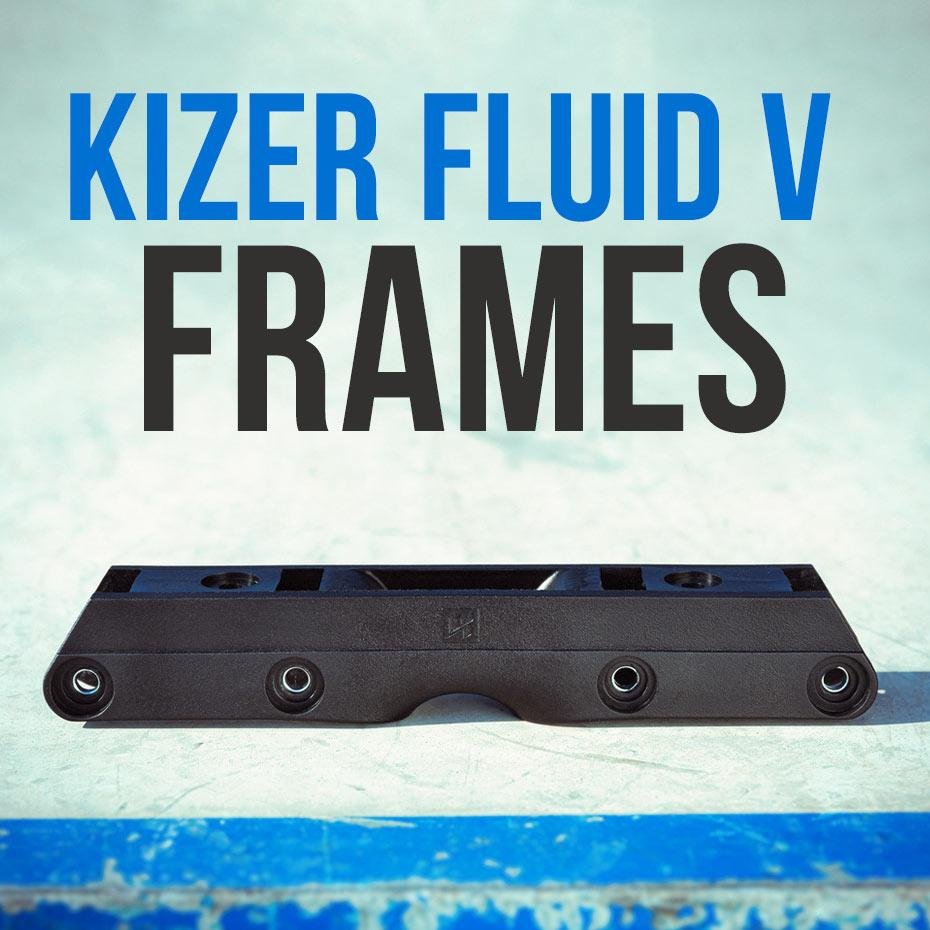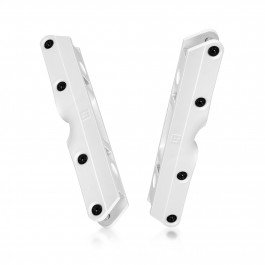Kizer, one of the oldest aggressive frame manufacturers, established as supplement of dynamically developing Universal Skate Design back in 1999. One of the main pillars of the aggressive segment of the Powerslide brand, emphasized its presence at the beginning of 2000 by offering wide selection of signature pro frames that went in pair with innovative USD Psirus skates. Phenomenal approach which coincided with the premiere of the UFS system.

The brand definitely grew on the rise associated with the introduction of the frame mounting standard in aggressive skates, just when skate personalization started for good. Earlier possibilities of modifying the equipment were limited to the choice of your wheels, or the addition of plastic grind plates, which made grinding a bit easier. An easy and standardized way of frame replacement gave the opportunity to expand / modify your equipment in order to stand out from the crowd a bit and, above all, to adjust it to own needs.
Beginnings
Stream — the very first UFS compatible frame by Kizer offered the optimal features for flat setups and met most of the expectations back then. Its unique and eye-catching design was exposing them very bluntly. Available in few colour schemes, frames were quite successful, showing the potential of the standardized UFS system. The brand took care of the right promotion as well. Outsiders video certainly had a significant impact on the increased interest of Kizer products. Released on VHS tape only, presented the entire official Kizer team with a strong emphasis on European representatives such as Albert Hooi, Fridolin Elbo and Neou Men. A solid video that cemented the brand image, proving that the world's leading skaters use Kizer's equipment.

Aggressive skating at the start of decade was quite different from the current trends. The tricks were much bigger and stunt oriented. In a way, it was often test of physical abilities as well as the limits of reason. High gaps, technical grinds on kinked drop rails etc — in 2000 it was just common, everyday routine. Such intense skate style started to require more adequate equipment. Having in mind all the drawbacks of the Stream model, Kizer introduces Fluid frames. Symmetrical design and unprecedented durability. The Fluid material that frames were made of had instantly become a recognizable feature of the brand. Noticeably harder and characterized by increased wear resistance, aroused considerable interest. The product turned out to be a success, so we quickly got an improved version. Fluid II slightly changed the shape, yet still offered the relatively easy flat setup. Fluid II frames had become a cult product for a reason. Blade media from that period (2002-2004) filled to the brim with skaters using Kizer equipment undoubtedly contributed to the popularization of the product. Don't we remember a classic blue pro Ranier Piramide frame or a white version of Aaron Feinberg? Popular video productions such as Fruitbooter or Words encouraged to give Fluids a try, giving the impression of an indestructible frame that will withstand even the toughest conditions.
Somewhat, the support for the Kizer brand began to gradually decline. It was a result of few factors like constantly rising competition, but also a bunch of ill-considered products that was flooding the absorbent market. Kizer Armortech frames, resembling a puzzle made of bricks, the withdrawn Kizer Suspension, or the first attempts of Kizer Element aluminium frames did not meet the expectations and eventually divided the fans of the brand. The third edition of Kizer Fluid received the new mould, characterized by a deep and wide groove. Turning away from the idea of the first two versions was probably the reason of not gaining as much popularity as its predecessors. Kizer frames were used more and more as components of complete skate models offered by USD, making them more a stock frame rather than after-market one. The role of flagship frame of the company was temporarily taken over by Kizer Slimline (a completely new design, which was supposed to facilitate skating / grinding on eight wheels), while the brand focused more on the design of UFS frames for bigger wheels. The new direction definitely broaden Kizer assortment, encouraging ageing skaters to urban skating, but at the same time struck out Kizer as an independent, strictly aggressive company, relegating it to the role of a manufacturer of Powerslide skate components.

The fourth revision of Fluid frame, directed strictly to antirocker enthusiasts, was supposed to turn the situation around. The frame was widely promoted as stand-alone product, yet still the most common purpose was to supplement complete skates like USD Sway, USD VII's, USD Carbons or occasionally Gawds models. To make matters worse, the transparent version of the Fluid IV frame used in signature Gawds skates, notoriously cracked, which ultimately contributed to attaching the label of the “unsuccessful” product. On top of everything the great return of the flat setups between 2014-2017 effectively repel skaters from two-wheel frame solutions.
As a consequence Kizer frames lost its exclusivity, becoming the basic one that can be found in the set with the complete skates. Equally, the innovative concept of unibody skates introduced by USD successfully distracted the supporters of Kizer's products. When almost the whole USD pro team switched to Aeon skates, UFS frames became irrelevant. It is no wonder that the popularity of Kizer's products has significantly weakened. Proper promotion by respected skaters has been a key element of our small industry. Product that anyone hardly skates or even hears about is simply a no for most of us.

The light at the end of the tunnel
At the beginning of 2020 Kizer brought up Fluid V. The premiere was rather quiet, no fireworks or big promotion. In the fifth edition, the designers of Kizer again opted for a flat frame. This time, the groove was slimmed as much as possible to allow for a wider wheel split. The edges of the groove, slightly overlapped the middle wheels (just like in the Kaltik V.1 frames), protecting them against any wheel bite. Fitting wheels of max size 61 mm, the frame has become a salutary solution for skaters who fell in love with flat USD Aeon setup and wanted something similar in the skates of traditional construction (where a shell and a frame are separate parts). Simple yet effective, solid product that breathed new hope into the Kizer brand.
Available in few different colours, Fluid V were quickly appreciated by the blading community. Lots of positive feedback appeared online, however, full acceptance of the Fluid V by the scene was received with the launch of the pro Jon Bolino skate by Mesmer Skates. Willing to offer unmatched flat experience, Mesmer uses Kizer Fluid V as integral part of their premiere skate model. The frames perfectly matched the refreshed version of the iconic Classic Throne and were immediately appreciated by customers. We could see the product in action finally — the electrifying skating of Jon Bolino, Levi van Rijn, Dominic Bruce in such production as Mesmer Rising or RV There Yet definitely turned up the desire to check them out.
Kizer Fluid V frames are undeniably a product you can count on. Great-quality hardware, unique material that facilitates grinding on aluminium elements and unparalleled stiffness when comparing to other composite frames. If you are coming back to skates of standard construction, e.g. after a few years of skating in USD Aeon and you are looking for a fairly easy setup on eight wheels, then we boldly recommend Fluid V frames — currently the most popular and trustworthy Kizer product.






